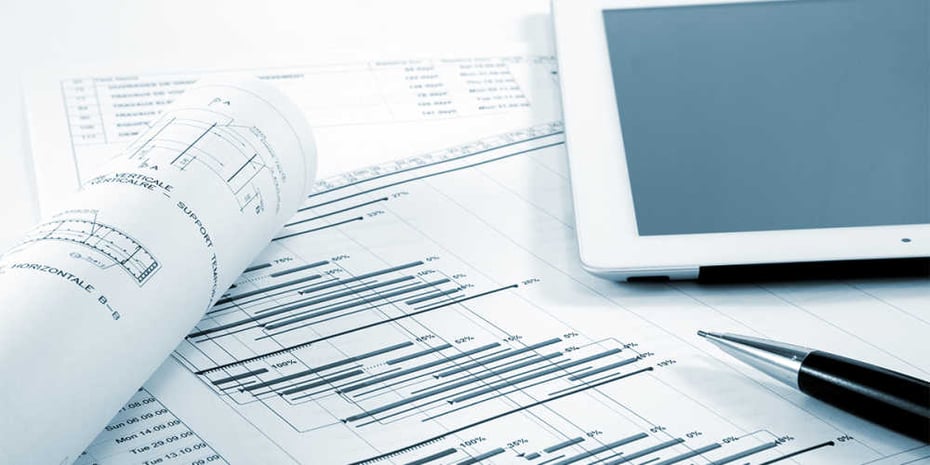Enhancing Operations Effectiveness: Architect's Specialist Methods for Building File Management
In the realm of architectural style and building, the careful monitoring of records stands as a keystone for job success. These methods not just make certain smooth task development yet additionally hold the crucial to opening improved efficiency and accuracy in the elaborate realm of building paper administration.
Secret File Organization Techniques
When managing construction documents, among the crucial methods that designers employ is establishing a reliable and methodical organization system. This system usually involves classifying records based upon their kind, such as drawings, specifications, agreements, and allows. By producing clear and distinct classifications, designers can quickly situate details details when needed, saving time and decreasing errors in the construction procedure.
Within each category, designers better organize papers by developing subfolders or using numbering systems to denote alterations or versions (construction document management). This ordered framework guarantees that the most existing and pertinent info is quickly obtainable while keeping a record of changes made throughout the job timeline
In addition, architects typically make use of electronic record monitoring systems that offer features like keyword search functions, version control, and access restrictions to enhance organization and collaboration among project stakeholders. These tools improve the file retrieval process, promote real-time updates, and facilitate seamless interaction, inevitably adding to the total success of the construction task.
Collaborative System Assimilation
To enhance paper administration effectiveness in building projects, architects seamlessly integrate collaborative systems to boost interaction and improve coordination among task stakeholders. By leveraging collective platforms such as project monitoring software, cloud-based storage systems, and interaction devices, designers can create a central hub for all project-related documents and interaction networks. These platforms permit staff member to gain access to, review, and collaborate on records in real-time, decreasing hold-ups and the risk of errors associated with traditional paper monitoring techniques.
Collaborative platform assimilation also promotes openness and accountability within the job group, as all stakeholders have visibility into the most up to date job updates and alterations. By centralizing communication and paper sharing, architects can guarantee that all staff member are working from the most updated info, decreasing the chances of misunderstandings or disputes emerging due to outdated papers.
Furthermore, collaborative platforms allow smooth partnership in between engineers, contractors, clients, and other job stakeholders, advertising a much more natural and reliable task operations. By damaging down interaction obstacles and facilitating information exchange, architects can drive productivity and innovation in construction projects, ultimately leading to successful task end results.
Variation Control Ideal Practices
Applying reliable variation control methods is vital for keeping paper accuracy and consistency in construction tasks. By developing a clear system for handling modifications, job groups can make sure that everybody is functioning from one of the most current documents, decreasing the danger of mistakes and disparities throughout the building stage.
One of the key best methods for variation control is to designate unique identifiers per paper version. This can be attained by making use of a numbering system or date stamp that plainly suggests the order of revisions. By plainly identifying each model, employee can quickly track the progression of the document and recognize the most current version.

Automation Devices for Performance

Paper control software, like Procore or PlanGrid, centralizes job paperwork, making it easily accessible to all stakeholders. These systems enable for real-time collaboration, variation control, and automated back-ups, guarding against information loss. Additionally, Building Details Modeling (BIM) software automates the generation of building and construction illustrations and guarantees that changes are integrated throughout all related papers.
Incorporating automation tools with cloud storage space solutions additionally enhances ease of access and safety. By automating the record management procedure, project teams can concentrate their time and effort on value-adding activities, ultimately improving efficiency and task results.
Secure Data Administration Solutions
Effectively handling and safeguarding job information is critical in the building and construction market to ensure discretion and his explanation integrity throughout the job lifecycle. Building firms can use encrypted cloud storage space services to safely save and share job records with authorized workers.
In addition, using electronic rights administration (DRM) devices includes an extra layer of safety by preventing the unauthorized distribution or duplication of task documents. Routine information back-ups are important to mitigate the risk of data see here now loss because of unanticipated conditions like hardware failures or cyber-attacks. Collaborative platforms with built-in safety attributes make it possible for smooth communication and data sharing amongst job employee while keeping information honesty.
Conclusion
In conclusion, executing essential paper company methods, integrating collective systems, exercising variation control ideal techniques, making use of automation devices, and taking on safe information administration options are necessary approaches for boosting operations effectiveness in building record administration. These expert methods can improve processes, improve interaction, make sure precision, and maintain data security throughout the building and construction task lifecycle.
In the realm of architectural style and construction, the meticulous administration of records stands as a foundation for project success. These strategies not just make sure smooth project development however also hold the vital to opening enhanced productivity and accuracy in the elaborate world of building and construction file monitoring.
To enhance file monitoring effectiveness in construction jobs, architects effortlessly integrate joint platforms to enhance communication and streamline sychronisation amongst job stakeholders. These systems allow group members to gain access to, review, and work together on documents in real-time, minimizing hold-ups and the danger of errors linked with traditional paper management techniques.
Utilizing automation tools in building and construction file administration considerably boosts efficiency and improves procedures why not check here for task teams. construction document management.